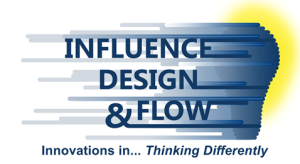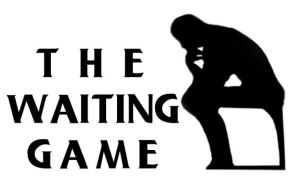
Organizations are struggling to forge a new path in innovation function and design that captures opportunities fast and also exploits the increasing need of being adaptive and flexible.
Organizations are looking at structures for their innovation activity that are taking a more agile and focused approach, wanting to push for constantly accelerating the process. New practices are emerging.
This is demanding more radical redesigns of the function, processes and structures around innovation. Innovators are being more challenged.
Against this need for new, more radical designs there still lies that underlying concern, often at the top of our organizations, on how to manage innovation risk without significant organisational disruption.
There is this lingering fear that pushing for more radical innovation can create significant upheaval within the organization. Innovation is being challenged by the view of “we want predictable innovation but radical enough to make sure we grow.”
Innovation has to manage within this conflicting message. It is through the well-designed system, processes and function that this can happen but this needs redesigning fairly radically to adjust to today’s world of wanting innovation faster than ever.
This is the sixth post centred on the executive innovation work mat
Within this post I focus upon the function, design, structure and processes needed for successful and sustaining innovation within organizations. In a recent series of articles I have looked at the seven components to raise questions, to probe and prompt the necessary thinking that needs to be made in organizations around building innovation that sustains and delivers to the strategic need.
The lexicon of today’s existing management of innovation needs rebuilding.
 You can read an incredible variety of advice on designing the innovation process.
You can read an incredible variety of advice on designing the innovation process.
These can include managing through idea management system software to reverting to simple ‘pen and paper’ brainstorming environments and spreadsheets.
Simply having in place some structured processes is essential to managing innovation. These can become very complex that go from idea all the way to final execution.
Then we get into the approaches to designing a portfolio to balance your innovation activity, the use of stage-gates to manage this, the whole product life-cycle process, the need for robust pipelines and well-designed platforms all enter the lexicon of managing innovation. It has become part of the lexicon of the innovator but not yet the common language we speak of, that a whole organization can talk and gather around.
Many of these systems we have become comfortable with, by working with them every day but I believe there is the need of some radical challenging and redesign needing to take place around these. Much within the innovation system needs designing out.
We need to rebuild a new common language surrounding innovation that is broader and more inclusive to all within our organizations. We need to recognize the changes taking place in competition, the need for a sense of urgency for growth and a ‘breaking out’ of the incremental mindset, that is still prevailing in many organizations.
There is a new chase for growth and even more through purposeful design.

This end choice is not which system or process has the best functions, the sexiest piece of software or the coolest design for its platform.
The choice is about going back and asking the basic of basic questions to the organizations top leadership: “what do you want innovation to achieve?”
You will get the simple answer: “growth” and also “innovation delivery needs to speed up in new products and services”.
You will also get “we need to outperform or at least keep us competitive in the market place” and then perhaps “innovation is expected to deliver what the market wants”.
These statements are all helpful but quite simply not enough. To deliver on innovations ‘promise’ you need to go deeper. Besides having a clearer strategic vision, for innovation, there needs this greater alignment to the strategic aspirations. For that, innovation needs explicit links and all of these points back to the strategic needs, goals and visions. The innovation work mat aids this exploration.
Achieving a well-designed design, function, structure and process is utterly dependent on the organization to translate the innovation needs and aims, define the workflow that ‘this will follow and how and where this will take place. Then it needs fully supporting and resourcing.
Today we need to think innovation outcomes differently.

The higher demand from innovation requires the system to respond far quicker to breaking opportunities.
Innovation needs to have a system that is constantly adaptive and flexible. Most of the rigidity needs to be designed out.
Organizations are requiring structures and processes that are far more agile, nimble, constantly recognizing speed as the essence of today’s competitive worlds.
The challenges that need to be addressed are replacing a linear system with a spiral one, where you constantly loop back to refit your innovation understanding back into the idea-to-launch system from the new knowledge you are gaining.
The system needs resetting around shorter bursts of high intense activity that factor in risk-based contingency, are encouraged to keep exploring and adapting.
The criteria to measure innovation passing through development, needs to become more open-ended. This can allow greater discovery periods to go where it is needed and not what the system is forcing it squeeze through a gate. The ‘go/kill’ criteria needs to change.
The system becomes a learning process to reduce uncertainty but keeps advancing on improving insights and physical demonstration that what is being investigated. This is through constant prototyping exploring and meeting customer or market needs with these stakeholders involved. As innovation discovery advances, the outcomes become more tangible, risks reduce.
We need to reduce where Innovation often sits waiting.
 We need to challenge the constant waiting within the development processes for innovation.
We need to challenge the constant waiting within the development processes for innovation.
This can be achieved through better designed systems of management perhaps a more value-stream analysis, accelerating by overlapping stages, encouraging concurrent activities, ensuring dedicated teams are assigned to properly resource projects.
We need to challenge and reduce the built-in slack within the innovation development system, wherever we can.
Today the emphasis is to maximize speed, working really hard on scoping the front end in greater detail really helps, and asking key questions on where the right track is and what this needs in resource, time and development and committing dedicated teams to the tasks.
We need to find better ways to incorporate lean principles, even six sigma into reducing the non-added value out of our innovation system. We need to provide succinct deliverable packages that tell the ‘advancement’ and learning story as the innovation concept moves along its development path.
Changing the milestone dependencies by using canvas techniques has exciting potential
 We need to reduce the dependencies on financial milestones and make these more physical, with constantly evolving and functioning prototypes that demonstrate new value, so stakeholders can understand and provide even greater inputs on ‘seeing’ new value creation.
We need to reduce the dependencies on financial milestones and make these more physical, with constantly evolving and functioning prototypes that demonstrate new value, so stakeholders can understand and provide even greater inputs on ‘seeing’ new value creation.
The principles that are being built up around the Business Model canvas within our business organizations offers much to be re-evaluated within our development life-cycle.
The introduction of new thinking such as the value of starting with a complete blank canvas or allowing the radical reworking of existing canvases of innovation concepts can offer new concepts to begin to be tested and evolve for products, and services as well as new business propositions.
The physical activities of testing, validating, and clarifying a more integrated design across all the parts do allow for exploring the uncertainties and risks in potentially imaginative ways. Taking a different design thinking to the development process can challenge old assumptions and processes.
We can constantly determine the critical but evolving assumptions and then work at delivering updates that can advance the development process through a dashboard approach of informing when critical assumptions or learning change.
We can take a more imaginative approach to the business model canvas to adopt many of its emerging tools and methods but this calls for a completely different mind-set in larger organizations in my opinion to their whole development process.
We are in real need to reinvigorate our innovation systems.
As I have stated in past posts, our legacy systems are holding us back today. We need to challenge our innovation functions, our existing design of the structure and processes to bring innovation into the core design of the organization, to align its value to present business conditions, where growth is required.
These do need to be more agile, adaptive and accelerated to meet the challenges and uncertainties organizations are facing. Innovation needs to step up to the plate and respond differently than in the past.
Innovation must be applied as a must to rethink and challenge what we have
Our processes and structures to manage innovation have become too linear, too rigid and far too planned, grinding through the innovation system.
Rethinking our innovation in function and designs calls for a more integrated approach offered in the Executive Innovation Work Mat.
Each of the seven components needs carefully designed to bring innovation far more into the core design of the organization and fully understood by all.
8 thoughts on “Are you evolving the innovation function and design”
Comments are closed.